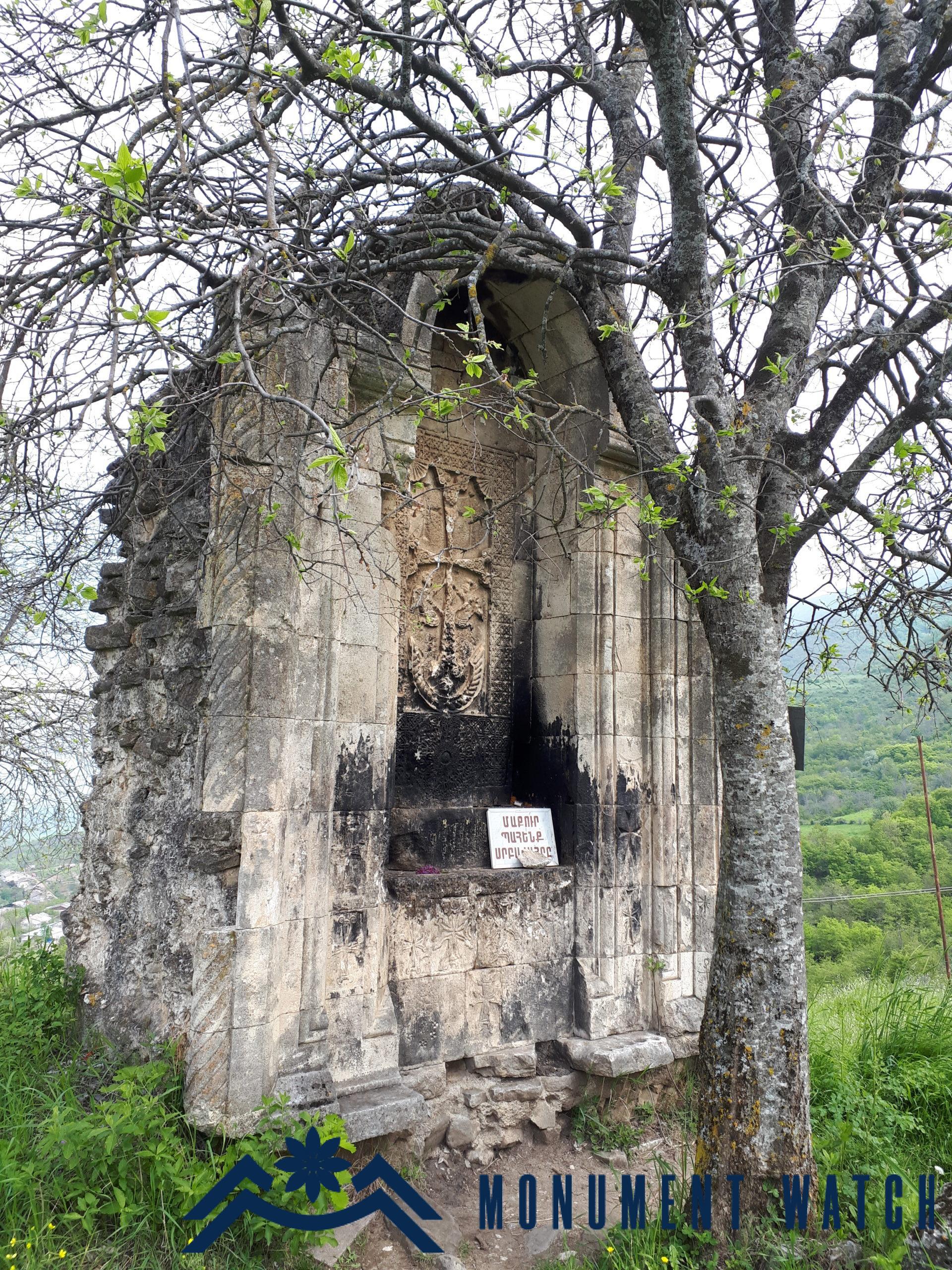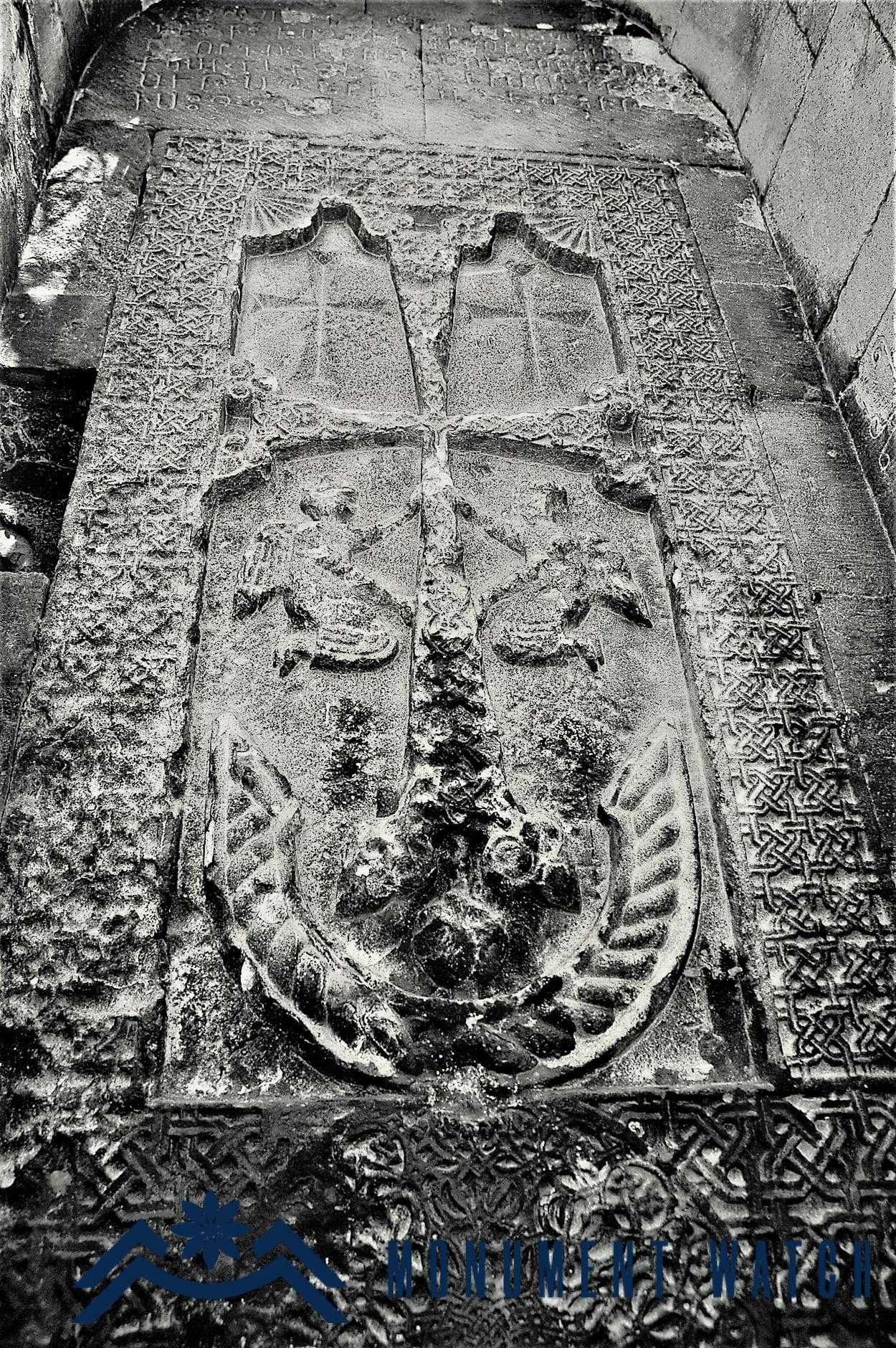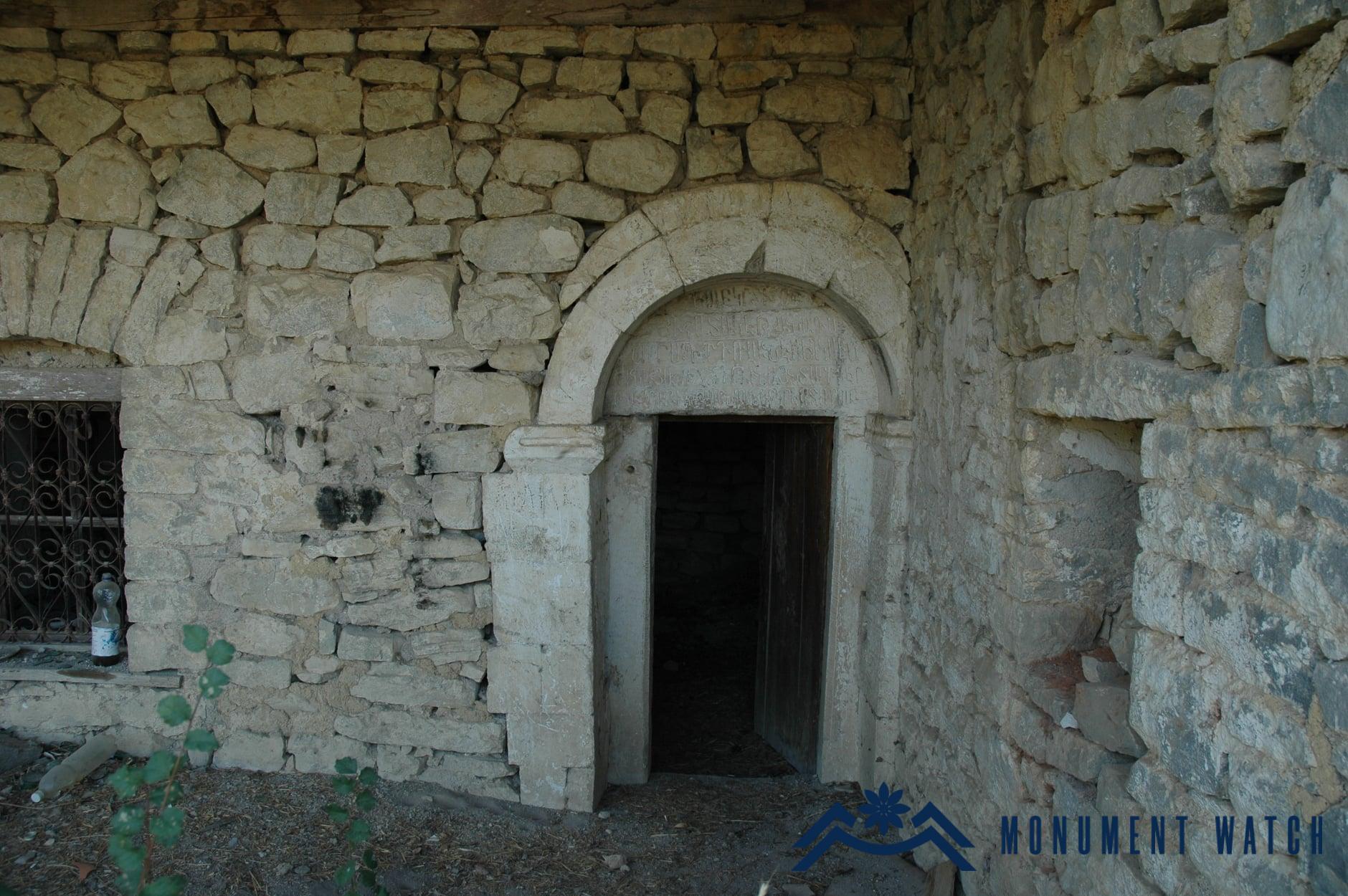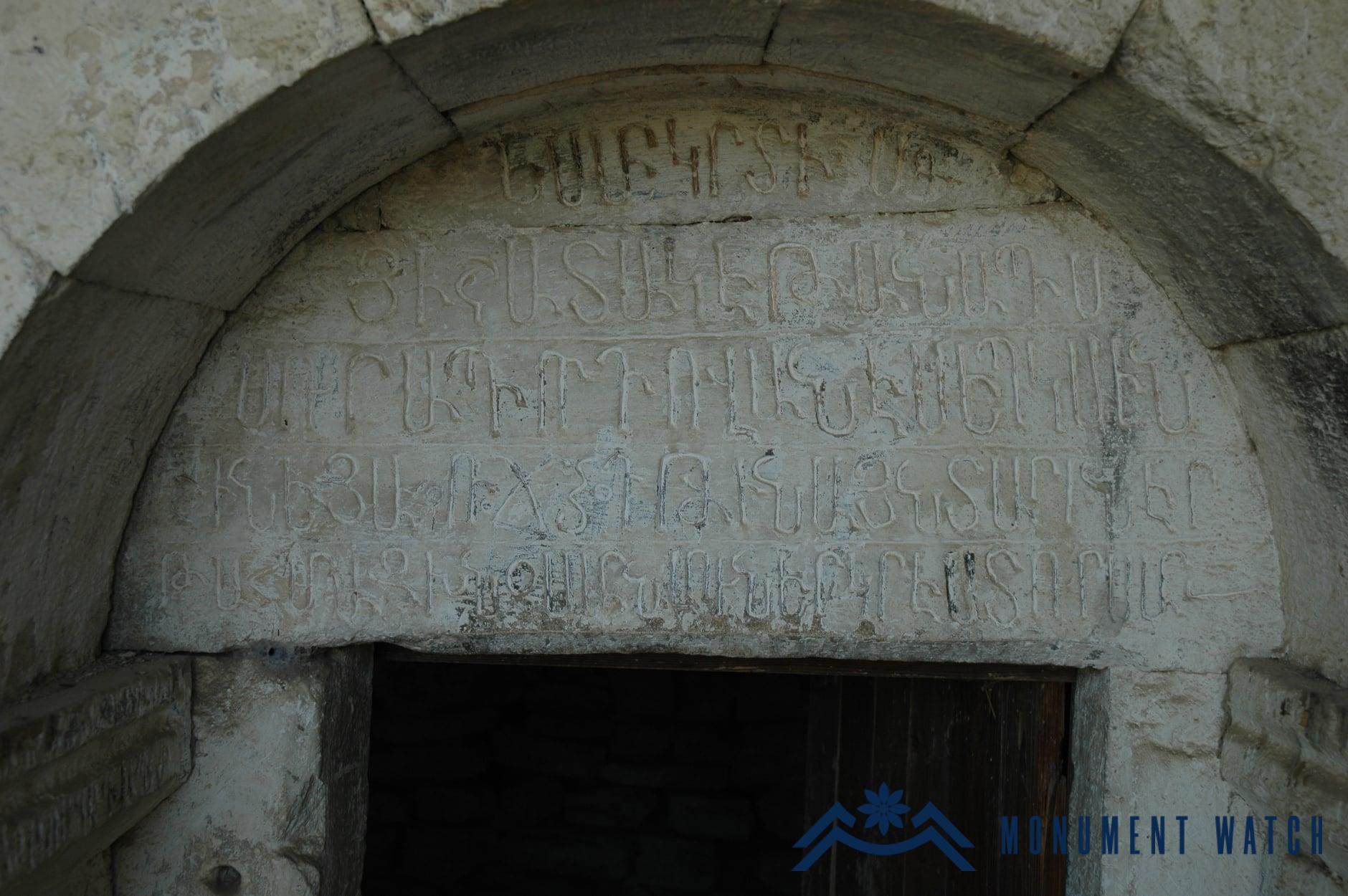Azerbaijan declared the monastery of Surb Khach in Hadrut as Albanian-Udi
On November 4, 2021, CBC TV Azerbaijan uploaded a report entitled "Members of the Albanian-Udi Christian community of Azerbaijan visited Hadrut" on its YouTube channel. The report is mainly devoted to the periodic visits of representatives of the religious Albanian-Udi Christian community of Azerbaijan "to the Christian monasteries of the settlements liberated after the occupation by Armenians", where they allegedly honor the memory of the soldiers who died in the 44-day war for the territorial integrity of Azerbaijan. This time they visited the monastery of Spitak Khach in Hadrut.
It’s quite interesting that during these visits of representatives of the Albanian-Udi community, Armenian historical churches are being proclaimed Albanian-Udi, and it seems that each such visit gives an impetus to the destruction of history and authenticity of the Armenian churches.
Let's recall that earlier they visited Dadivank and Tsitsernavank and declared them Albanian-Udi. While the representative of the Udi community, Robert Mobili, claims that this is their historic visit to the church, the video camera captures the inscriptions in Armenian.
The monastery of Spitak Khach got its name in 1346 from the khachkar embedded in the wall that was placed there (Fig. 1, 2). The inscription on its tympanum says: “I - Ajami, the son of Ishkhan, erected this cross for the salvation of the soul of my son Asudar. Whoever reads it, I beg, mention me in your holy prayers. In the year 795 (1346)” (see also).
The khachkar is a simplified copy of the composition “Cross of the Second Coming” created in Gtchavank monastery, where angels bring the victorious cross as salvation for the faithful. The inscription on the tympanum of the guest house of the monastery says: “I, Mikrtich, wrote: this guest house was built in memory of Bishop Hovhannes, the son of Surap, in the year 1735, the year when Tahmaz Khan expelled the Ottomans out of our country” (Fig. 3, 4).
As it follows from the anti-Armenian statements of Azerbaijan, the Armenian society, enduring the aggression of the Ottomans who speak and write in Armenian, does not understand that they are Ottoman Udins and the allies of the Azerbaijani invaders.
It turns out, that the Armenians of Artsakh, putting aside their political and religious life, were busy with the Armenization of nonexistent Albanian churches. They embedded khachkars into the walls, carved inscriptions in Armenian and destroyed the Albanian trace.
The definitely fictional divine service performed by the representatives of the Udi community is shocking and absurd. That includes lighting candles without any coasters in the altar part of the church and defiling the sacred territory.
Our response
Cultural genocide does not refer only to the physical extermination, but also to distortion and falsification of history and religious affiliation, ignorance of facts, memory erasure, and creation of false cultural or religious practices. The proclamation of the Armenian churches as Albanian-Udi by Azerbaijan, and the illegal divine services performed in the Armenian Apostolic Church clearly violate the religious and cultural rights of the Armenian Christian community, hurt its religious feelings.
As for the appropriation of the Armenian cultural heritage by Azerbaijan, we find it necessary to note that once it is declared Albanian or Udi, it loses its main value, loses the criteria of authenticity and integrity that follow from the UNESCO Convention on World Cultural and Natural Heritage, the Nara Document of Authenticity adopted in 1994 in Japan, the document signed in 2017 by ICOMOS in New Delhi, as well as various documents of other international structures.
Moreover, according to the Second Protocol of the Hague Convention of 1954 for the Protection of Cultural Property in the Event of Armed Conflict (1999), Article 2, point C “any alteration to, or change of use of, cultural property which is intended to conceal or destroy cultural, historical or scientific evidence” is prohibited.



